Page Contents
Do you dream of sun, white sand beaches, and breathtaking landscapes? You’ve come to the right place! Let’s discover French Polynesia together, a little paradise lost in the Pacific.
Tahiti, Bora-Bora, Moorea… these names are surely familiar to you! These paradisiacal islands are synonymous with French splendor in the collective imagination.
However, beyond the exceptional landscapes, this overseas territory hides a breathtaking ancestral culture that must be known.
The Tiaré flower (flower symbol of Tahiti), traditional Polynesian songs, or the famous international canoe race: Hawaiki Nui va’a.
French Polynesia is full of surprises whether cover its history together!
French Polynesia Vacation: An Exotic Journey with The Sweet Scent of Tiaré Flower
Immersion in French Polynesia
A huge territory
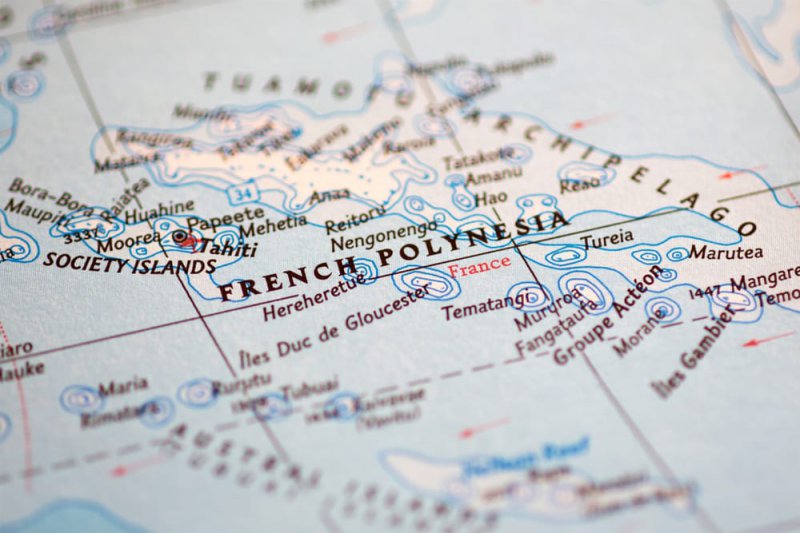
You must know French Polynesia, and you may have even dreamed of treading the sand of its beaches … However, few imagine the greatness of this territory, also called “Tahiti and its islands.”
No less than 2.5 million km² separate the 118 islands that make up this corner of paradise!
Composed of 5 archipelagos (the Society Archipelago contains the Windward Islands and the Leeward Islands, the Tuamotu Archipelago, the Gambier Archipelago, the Austral Archipelago, and the Marquesas Islands), French Polynesia finds its place in an area rich in history: the Pacific Ocean.
A history that crosses the centuries
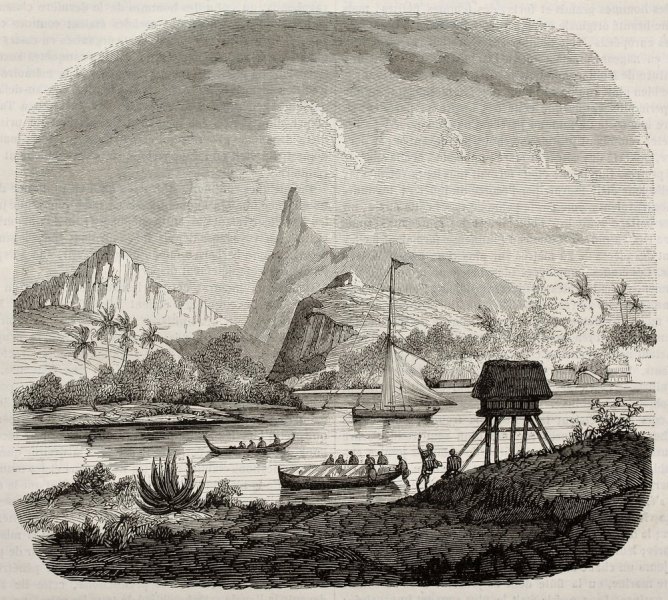
According to legend, the first humans to walk these lands originated in Southeast Asia. They would then have landed on these islands in the year 300…
Later, on the outskirts of the eighteenth century, Europe is conquering the world! A conquest that also definitively marks the history of Polynesia, when European navigators meet for the first time with Polynesians at the end of the eighteenth century.
Difficult years ensued, marked by epidemics that weakened the Ma’ohi people. Europeans are increasingly establishing themselves on the territory and vying for influence in their frenzy of power.
Finally, France settled in Tahiti in 1842 and gradually imposed its protectorate.
A large autonomy concerning France
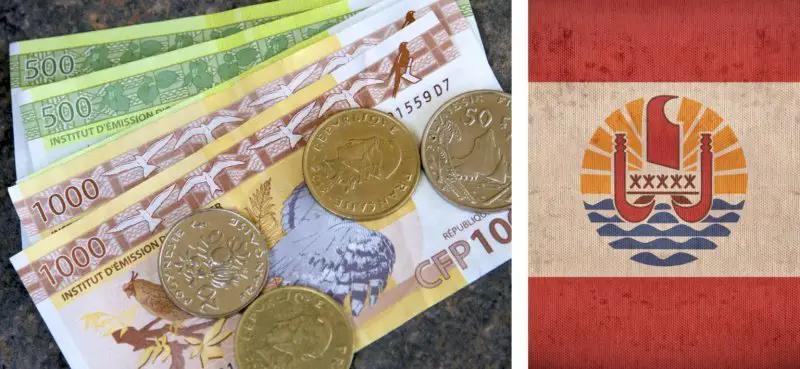
The Pacific Battalion – a group of Polynesian soldiers – provided significant assistance to France during the First and Second World Wars.
This aid, delivered in one of the saddest periods on our planet, will allow the Polynesian populations to obtain the right to vote in 1946.
The post-war years marked the return of Polynesian culture to their islands, the latter having lost its beauty after the arrival of Europeans.
Two laws, respectively introduced in 1977 and 1984, will change the future of Polynesia forever!
The first concerns management autonomy, and the second concerns internal autonomy.
Therefore, we are at a turning point in Ma’ohi history! Since metropolitan France granted French Polynesia much autonomy, its status changed utterly.
That’s why Polynesia is the most autonomous territory in the Republic today.
You will quickly understand this during this trip since the local currency is not the euro but the Pacific franc (as in New Caledonia and Wallis and Futuna).
A culture inherited from their Ma’ohi ancestors
Every Polynesian finds his strength in “mana,” a spiritual power that inhabits certain objects and people. Mana is a force, a power that one feels when communing with nature.
Since they originated from their famous Ma’ohi ancestors, these Polynesian beliefs have a long history.
The legacy left by these mythical people of adventurers has survived years and centuries, despite the arrival of Europeans.
Moreover, this heritage is still particularly present in the heart of Tahiti and its islands.
The latter will have left the Polynesians a real reputation as warriors. Warriors formed around courage, strength, respect, humility, and self-sacrifice.
These same values are still transmitted today, from generation to generation in Polynesia.
These traditions are significant since they punctuate life in French Polynesia. These customs are carefully transmitted and maintained, from dances to traditional songs to tattoos.
Traditional dances and songs, a marker of resistance
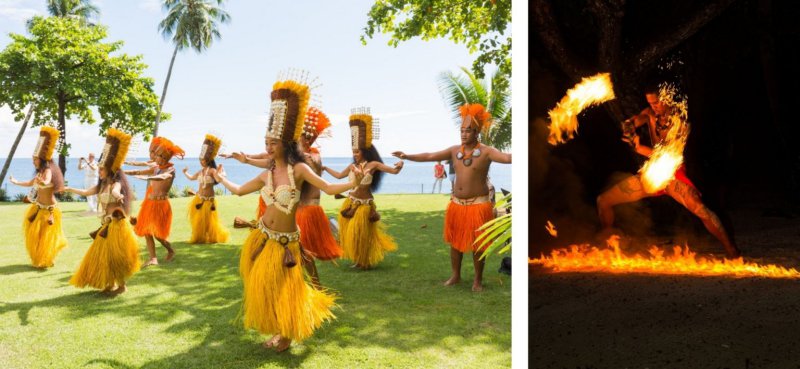
The arrival of Europeans left a deep impression on the Polynesian people and their traditions. By banning the practice of traditional dance and songs, Europeans have weakened a heritage that has survived the centuries.
This was before mana and these people, who brought these traditions into the twenty-first century despite prohibitions, brought them to life.
These arts then immediately regained all their importance in Polynesian culture. Today, traditional dances and songs represent the sacred expression of Polynesian life and beliefs.
You can hear drums, ukuleles, and other traditional instruments everywhere on every island. The craze around dance and music on these islands is indescribable.
Especially during the Heiva, which takes place in July in Papeete. This competition of dances and songs, very festive, brings together all the troops from the archipelagos around Tahiti and lasts a whole month.
Polynesian tattoos, the sacred art of Polynesian culture
According to legend, the Polynesian tattoo is of divine origin and was transmitted to men by the two sons of the god Ta’aroa: Mata Mata Arahu and Tu Ra’i Po.
Moreover, the Ma’ohi people are considered today the gods of tattooing. For a long time, tattooing was an essential step between adolescence and adulthood in Polynesia.
Banished when Europeans arrived, it regained its sacred place in Polynesian culture and was exported worldwide.
Do you now understand why so many Polynesians are tattooed? The art of tattooing is intangible, and he has developed his patterns in each archipelago. It is the artistic expression of the personal history of every Polynesian.
Unique biodiversity
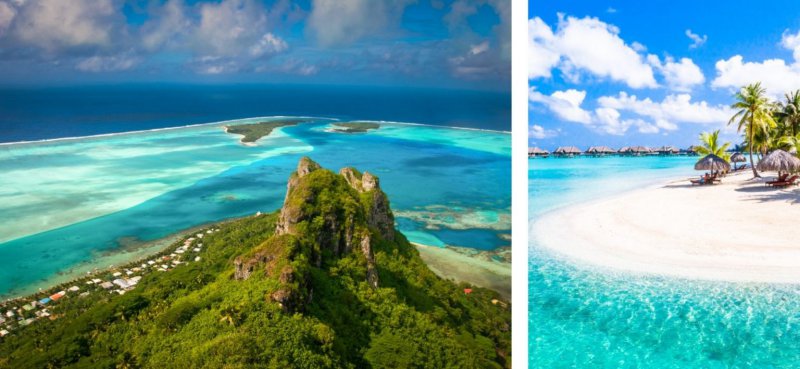
French Polynesia is one of the destinations whose mere evocation is enough to make you dream. The natural treasures of Tahiti and its islands immediately transport us to a unique world.
With white-sand beaches, turquoise blue lagoons, and coconut trees as far as the eye can see, a trip to Polynesia now makes sense!
Natural resources and exceptional lagoons, a journey to paradise
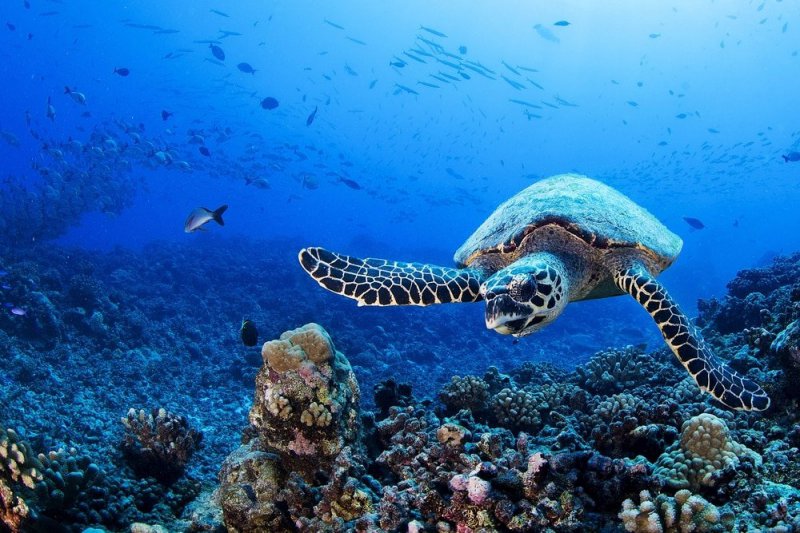
If you ask a Polynesian about the most priceless goods, he will tell you his land’s incredible ecosystem and richness.
The idyllic landscapes, the cultural richness, and the beauty of the lagoons make us want to freeze time to contemplate Polynesia eternally.
The lagoons of Polynesia are so singular, probably the most scenic in the world. In coral gardens live unique underwater species.
Turtles, dolphins, manta rays, sharks, multicolored fish… an actual life-size painting awaits us underwater!
An island apart and preserved: The example of Maupiti
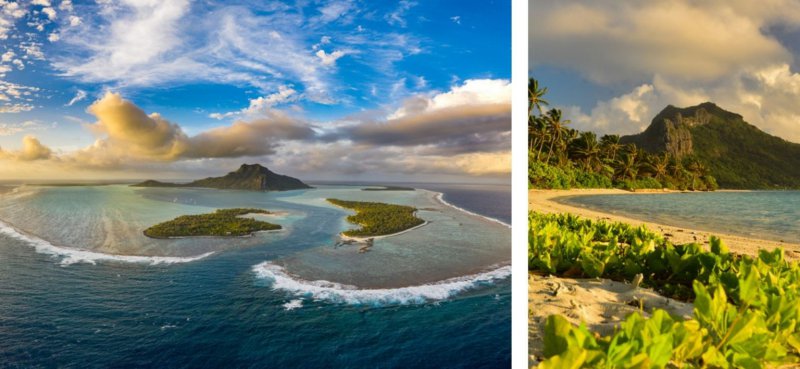
A small island called Maupiti has stood up to large hotel groups for years. This tiny territory has chosen to maintain its authenticity and wild side at all costs!
Unlike its sisters, Tahiti, Bora-Bora, and Moorea, there are no hotels on the island; nature is breathtaking and preserved from mass tourism.
Be careful; your stopover in Maupiti may fill your eyes!
There are only a few guesthouses on this island, which is the best way to soak up the local daily life. People who live there are very simple: fishing, canoeing, growing local fruits… that’s all they do.
A unique opportunity to enjoy the sun, white sand beaches lined with coconut trees, and a fantastic turquoise blue lagoon. It’s all about simplicity and authenticity… paradise, just for you!
An unforgettable welcome
Beyond the exceptional landscapes of this little piece of paradise, the welcome of Polynesians may mark us eternally. Because it’s not just a legend…
The Polynesian population is warm, welcoming, and generous, like nowhere else. For centuries, the sense of welcome has been unique in Polynesia.
Flower necklaces as a symbol of welcome
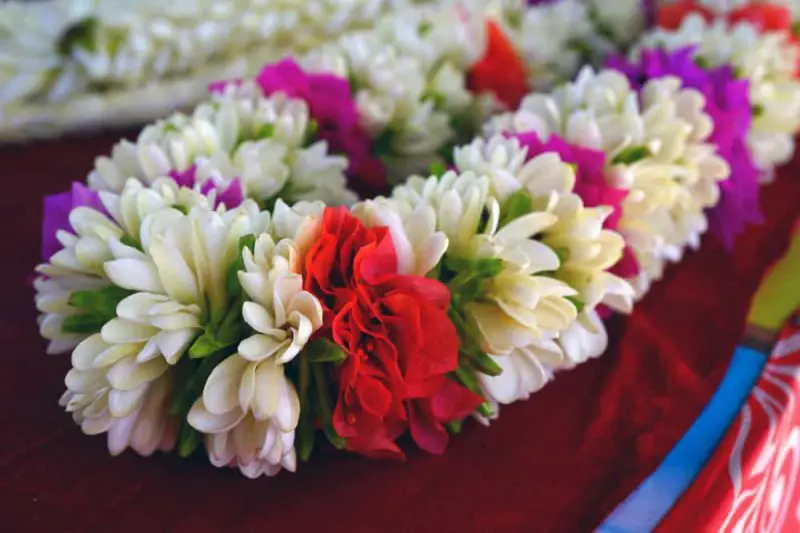
At the airport, we are welcomed with the exhilarating, intoxicating scent of Tiaré flowers as soon as we arrive.
The flower is more than just a flower; it is the national emblem of French Polynesia. The songs and dances accompanying our arrival around the ukulele immediately mark our journey. We then understand that the latter will be unforgettable.
Polynesians: An incomparable kindness
Polynesians know how to put themselves at ease like no one else, thanks to their smiles, joie de vivre, and incomparable kindness. Their sense of sharing is indescribable, unimaginable, and extraordinary!
They communicate very easily with everyone around them, with remarkable ease.
Additionally, in Polynesia, the will does not exist: everyone in the islands is friendly, greeting and shouting hello. It is possible to hear “Ia ora na” (hello in Polynesian).
What may seem anecdotal is, in fact, very representative of the Polynesian way of thinking. Social barriers have no place in these sublime lands, and they are very humble people.
Shell necklaces as a goodbye message
As our journey draws to a close, we discover one last surprise at departure. Our exploration of Polynesia has been rich in encounters, admirations, and pleasures, but it ends in a cascade of emotions.
Rather than being too formal, Polynesians know how to make this moment memorable and unique. So they will offer you a heavy heart but… with several necklaces of shells around the neck.
This Polynesian tradition means that the person who offered us this necklace wishes to return to Polynesia. An enduring symbol of friendship and respect, which has a profound impact.
The canoe: national sport
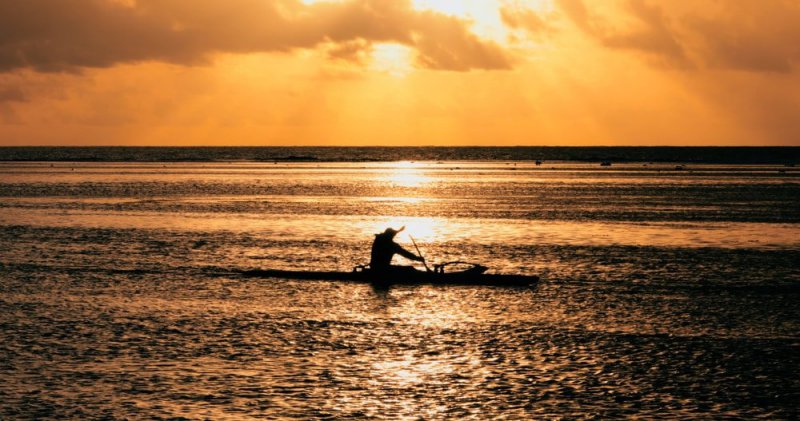
But before take-off, there is still one last step that we must mention… To end this trip without telling you about the Polynesian canoe, called “the va’a,” a real national sport in the Pacific?
The va’a, a real institution in Polynesia
This very physical sport requires a lot of coordination. It is today an institution, a true legend in French Polynesia, more than just a sport.
Several races take place in Polynesia over short distances in the lagoon: 500, 1,000, and 1,500 meters for speed.
The challenge goes much further for the bravest, on marathons on the high seas ranging from thirty kilometers to more than 150 kilometers.
The Hawaiki nui va’a-The most famous va’a race
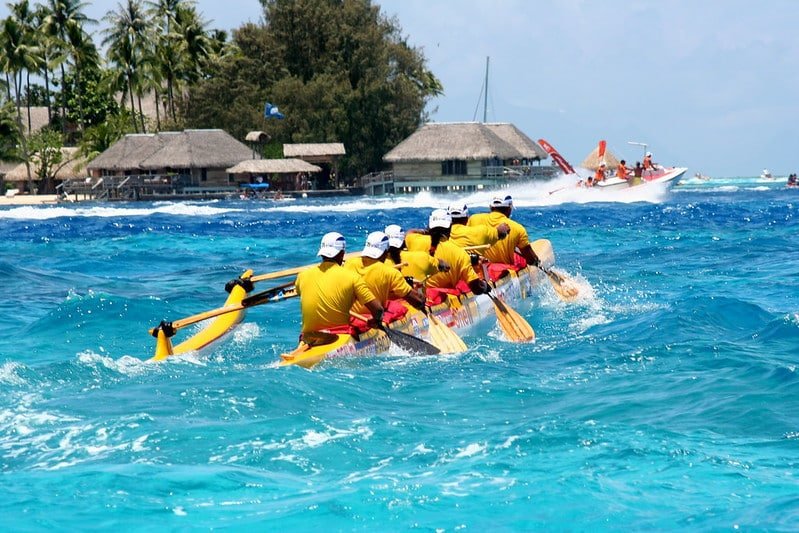
The most famous of the va’a races is the iconic Hawaiki nui va’a. This international race is a major event in Polynesia since it brings together the whole country and other Pacific nations, usually in October or November.
The race represents no less than 125 kilometers for the men’s teams, more than 9 hours of effort spread over 3 days! Every year, the 3 stages connect Huahine, Raiatea, Taha’a, and Bora Bora.
An experience that plunges us a little more, and for the last time, into the heart of Polynesian traditions.
All good things, unfortunately, come to an end. After enjoying the last moments in the company of our Polynesian friends, it is time for us to return.
Our exotic and incredibly idyllic trip to French Polynesia is coming to an end. With a big heart and filled with memories, we leave this little piece of paradise in the Pacific.
More than just a trip, it will have allowed us to discover a breathtaking culture and a unique history, which we look forward to rediscovering.
“mauruuru roa” (thank you very much) for reading the article.
